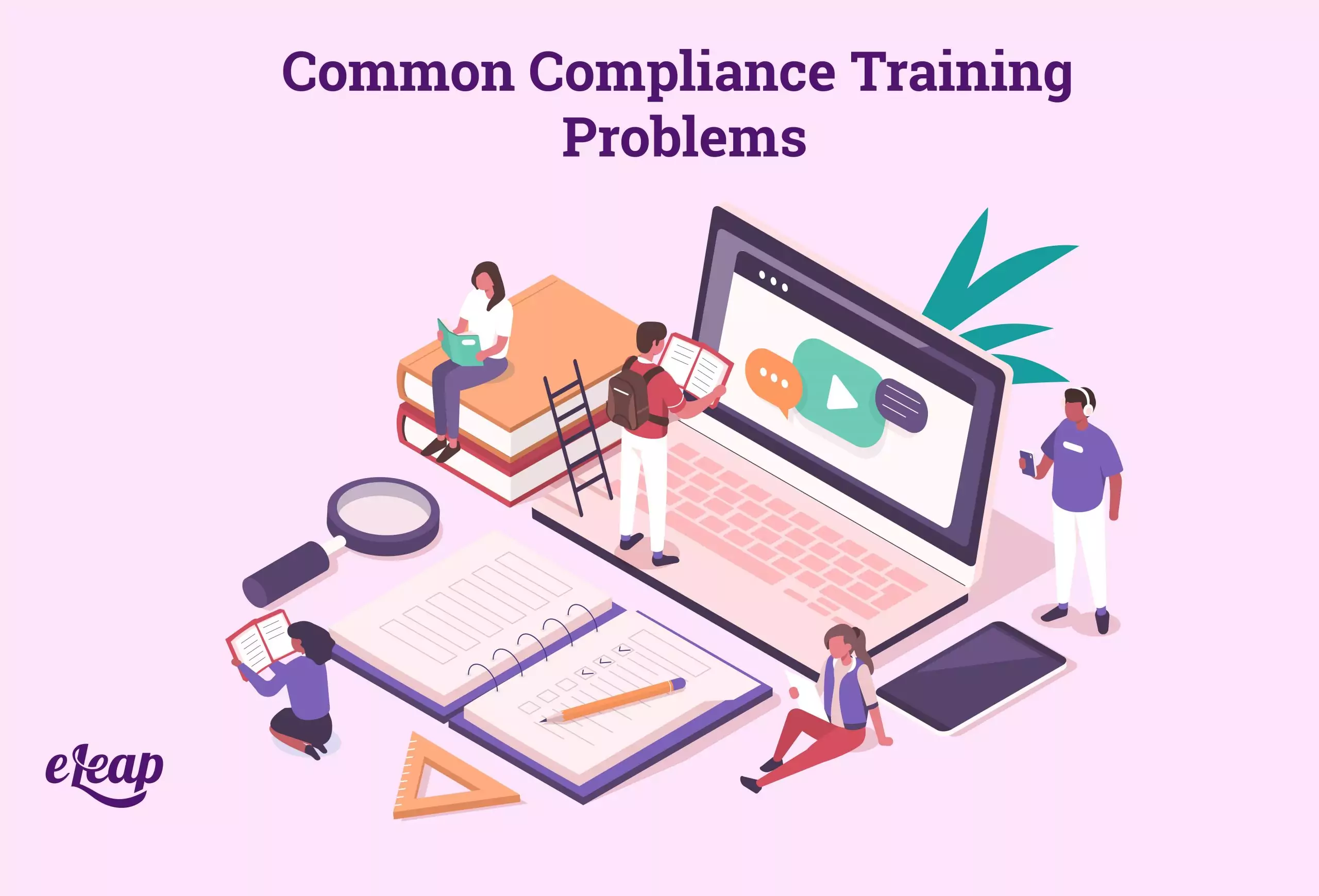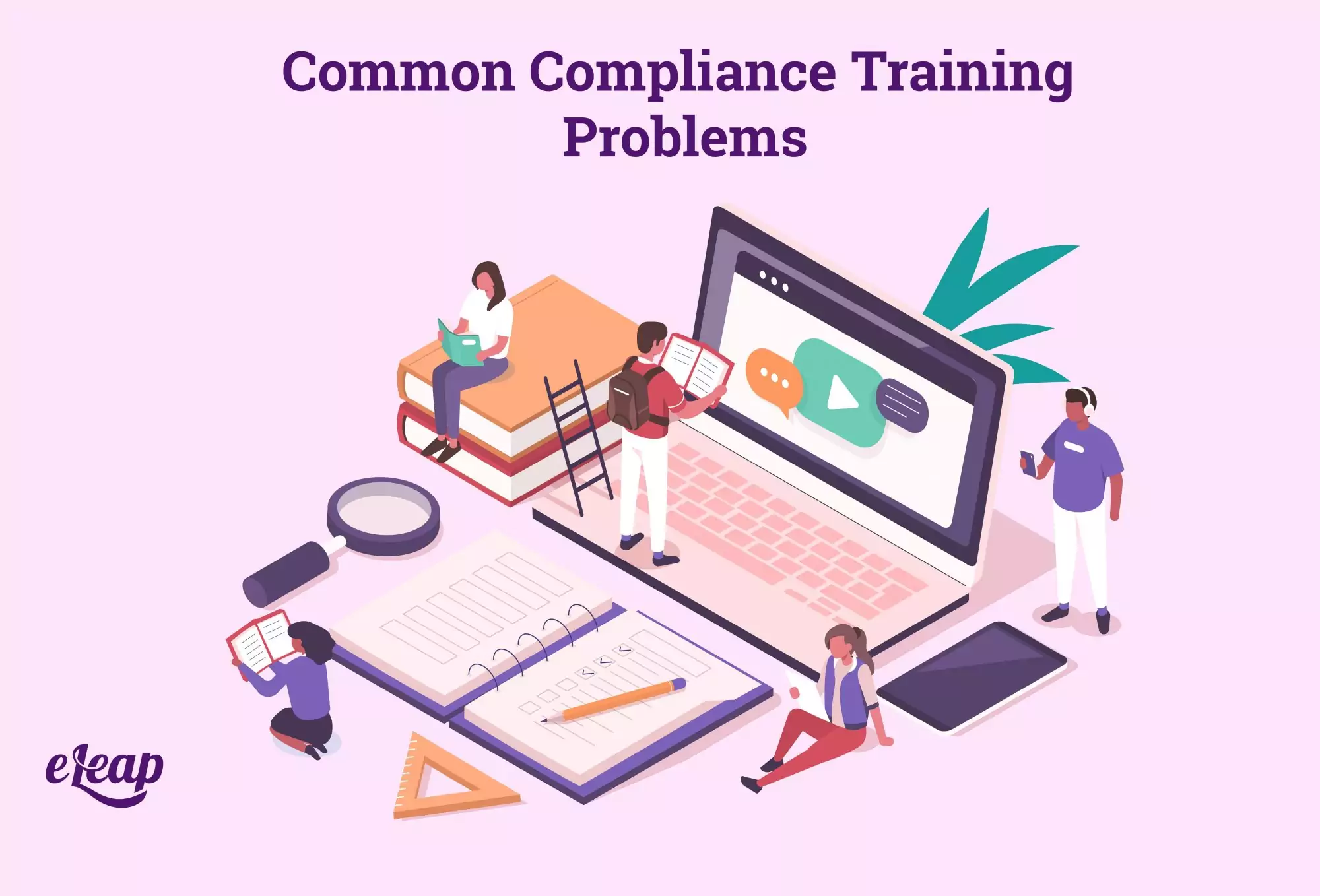Common Compliance Training Problems

Compliance training doesn’t tend to be the most exciting type of training out there, but it is critical to the proper running of an organization. Unfortunately, compliance training can be dry and difficult for employees to understand if not delivered the right way. This is bad news because compliance training is so critically important that you need your employees to pay the requisite attention it deserves.
There are a number of different reasons why your compliance training might not be up to par. Usually, one of the key reasons is simply because your employees are bored. But if compliance training isn’t taking seriously, it can have some bad consequences. Here, we will talk about some of the biggest issues with compliance training.

Compliance Training Problem Courses are Too Long
If your compliance training problem is too long, it’s going to be more difficult for employees to absorb what they’re saying. Realistically, a massive amount of content just won’t be very easy for employees to take on board. Longer courses also tend to be much more boring, which only makes them even harder to absorb. If you want to keep employees engaged, you need to keep your compliance training as short and sweet as possible. In many cases, the number of hours employees spend on compliance training is actually entirely irrelevant to how effective it is. Try to make more focused training instead and eliminate anything that isn’t absolutely necessary. Additionally, make sure that courses are broken into small lessons that are understandable.
There’s No Room for Practice in Compliance Training Problem
Eventually, there’s a good chance that your employees will have to put their compliance training into practice. But it might not happen often, and it might not happen soon after the training is completed. This makes it likely that employees will forget what they have learned fairly quickly. If there isn’t any allowance for employees to practice what they learn, they’ll forget it. And, even worse, when the time comes, they won’t have any idea how to put what they learned in the course into practice in real life. Good compliance training courses should allow plenty of time and space for employees to practice the training in a more hands-on manner. This will also help with retention rates. For example, try role-playing exercises or simulations.
The Courses Are Too Complex
Sometimes, compliance training problem in itself can be a bit tricky. But even if this is the case, your compliance training problem courses need to be as easy and understandable as possible. It’s important that complex concepts are broken down so they’re easy to understand. Additionally, many compliance training problem courses don’t accurately correspond with the level of knowledge that your employees already have. If the course is too advanced, they’ll get bored, confused, and they won’t learn anything at all. Ensure that the content is suitable for your employees and is simplified so that they can understand it. This might require different compliance courses for different departments depending on their overall level of knowledge.
The Content Itself is Too Boring
Compliance training problem isn’t always fun, but it can at least be made somewhat interesting if it’s approached in the right manner. All too often, there’s just no spark to the content. It’s plain, and it’s boring. When talking about a topic that isn’t very engaging, effort needs to be taken to make it as interesting as possible. Avoid making compliance training long chunks of texts or monotonous seminars. Use your tools, such as your learning management system, to ensure the content includes engaging activities. These could come in the form of games, simulations, or interactive quizzes. Whatever you can do to make content less plain is a plus.
You Have No Tracking System Set-Up
Just trusting that people have taken the course isn’t good enough, you need to know where each of your employees stands. This requires a tracking system that makes it easy to see who has undergone compliance training, and even what scores they have received on assessments. Metrics and data give you critical insight into who has taken the training and how well they have understood it.
A learning management system with an automated report generator is a critical component when it comes to accurately track compliance training. You can also use the data in ways through which you can improve your overall compliance training course. Tracking will also help you to easily see what employees might be struggling with and whether or not they need any kind of help .
The Content is Old and Irrelevant
Compliance training should always be up-to-date to ensure its effectiveness. Out of date training isn’t going to do your company or your workforce any good. Furthermore, when it comes to compliance, inaccurate information, rules, or policies can actually be dangerous. Make sure that the content of your course is up to date with current company standards, laws, and regulations. A more relevant course will also be decidedly more engaging.
Overall, compliance training isn’t the most engaging form of training for employees. No employee wants to sit through a tedious compliance training program where they end up leaving without learning anything. Often, organizations don’t use their learning management system resources to their full advantage in order to improve compliance training. A good LMS gives you numerous beneficial tools are your fingertips to help make compliance training more interesting, engaging, and easier for employees to absorb.
Take advantage of your learning management system to make training short, sweet, and engaging. By splitting the courses into smaller chunks, and by making sure that employees get the opportunity to practice, and setting up tracking in order to know how efficient the course is. Use your learning management system to your advantage to ensure your employees get the most out of their compliance training.